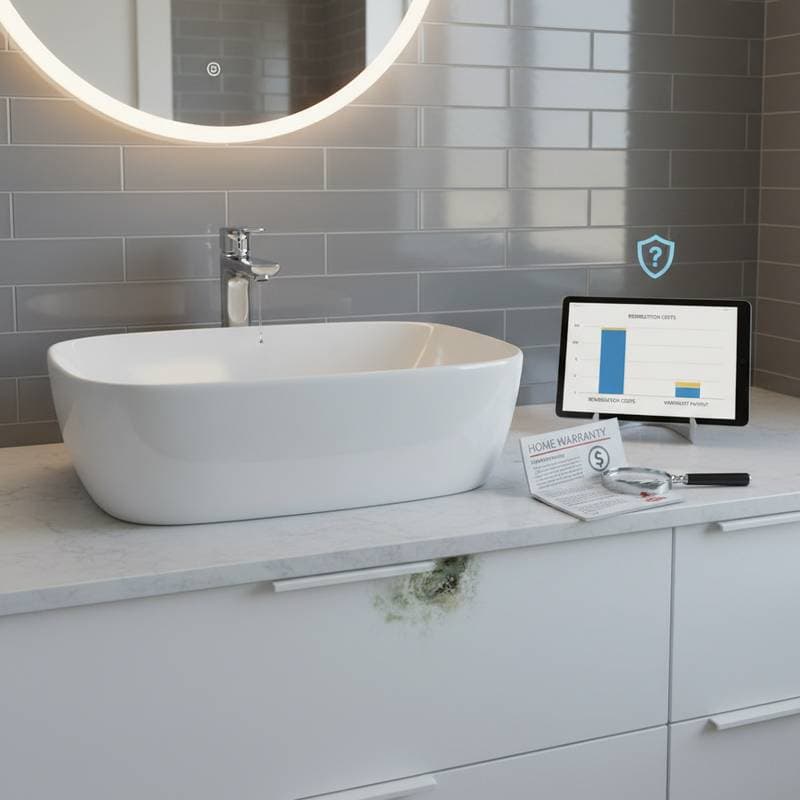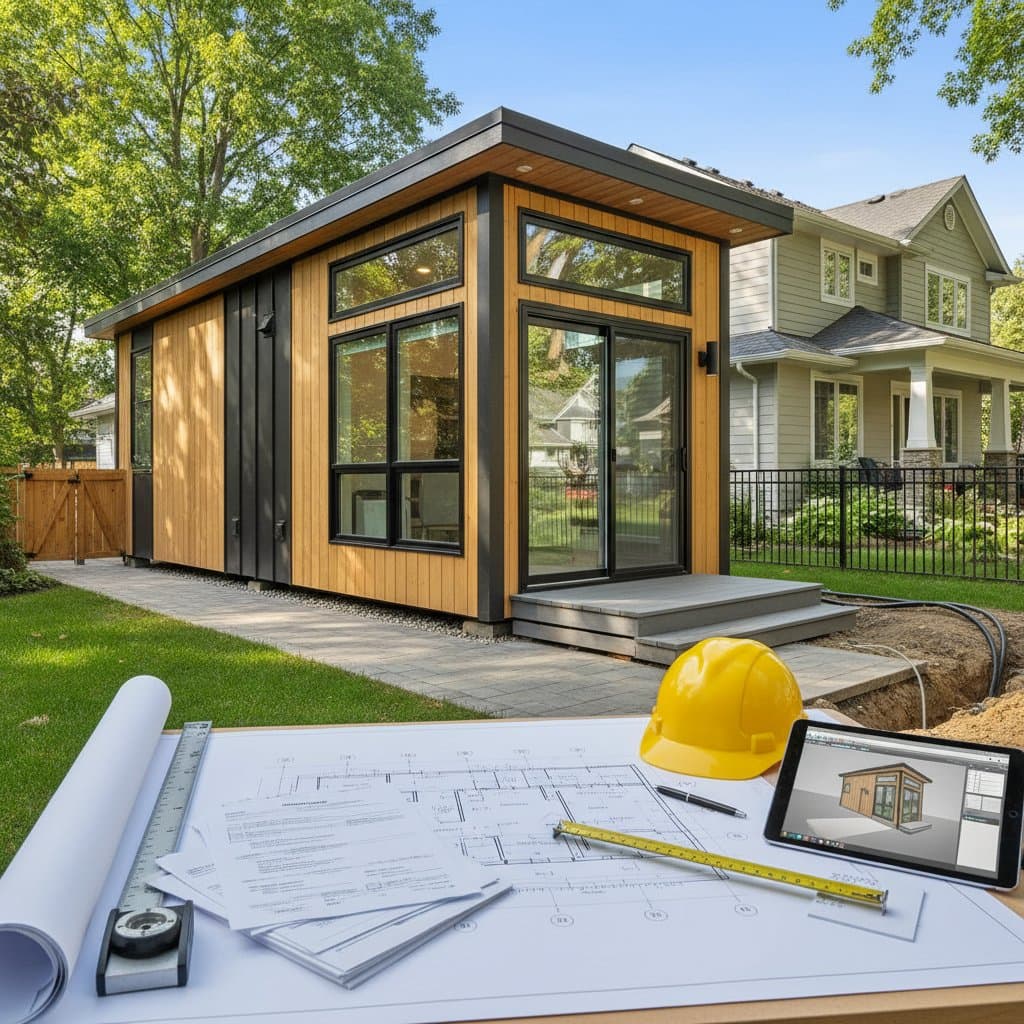Kitchen Island Return on Investment in 2025: Balancing Costs and Benefits
Key Insights
A kitchen island elevates home value and operational efficiency when integrated thoughtfully into the space. Homeowners often realize 60 to 80 percent return on the investment. Costs typically span $3,000 to $10,000, influenced by dimensions and material selections. The greatest returns emerge from incorporating elements such as storage compartments, seating arrangements, or integrated utilities that streamline routine tasks.
Defining the Kitchen Island
A kitchen island consists of a freestanding cabinet unit positioned in the central or open portion of the kitchen. It provides storage, seating, appliances, and preparation surfaces. Certain designs incorporate sinks or cooktops. An appropriately selected island optimizes movement patterns and increases market value, though outcomes hinge on thoughtful design choices, durable materials, and seamless alignment with the existing kitchen dimensions.
Advantages and Drawbacks
Advantages
- Expands available countertop and storage areas.
- Establishes a focal point for meals or social interactions.
- Enhances marketability when coordinated with the overall kitchen aesthetic.
- Facilitates the addition of electrical outlets or preparation sinks to refine task efficiency.
Drawbacks
- Diminishes open floor area and circulation if dimensions prove inadequate.
- Incorporation of electrical or plumbing systems escalates expenses rapidly.
- Potential interference with current ventilation or illumination configurations.
- Bespoke surface treatments inflate costs without proportional value appreciation.
Scenarios for Success and Shortcomings
Conditions for Success
- Minimum 42 inches of surrounding clearance exists.
- The kitchen configuration accommodates a continuous circulation path.
- Additional preparation or seating areas are desired without undertaking a comprehensive renovation.
Conditions for Failure
- The kitchen width restricts adequate clearance.
- The island obstructs access to appliances or entry points.
- Required permits for electrical or plumbing modifications are overlooked.
Guide to Planning and Installation
Essential Tools and Materials
- Tape measure
- Level
- Stud finder
- Drill with appropriate bits
- Electrical tester
- Cabinet base or prefabricated island assembly
- Countertop material
- Screws, brackets, and anchors
Estimated Time: Two to three days for a fundamental installation excluding plumbing elements.
Skill Level: Moderate to advanced, varying with incorporated features.
Step 1: Assess and Design
Evaluate the kitchen configuration thoroughly. Outline the proposed island position using painter's tape. Ensure at least 42 inches separation from adjacent counters, extending to 48 inches opposite primary appliances. Verify that all doors and drawers maintain full operational range.
Step 2: Select the Foundation
Opt for a prefabricated cabinet unit, modular assembly, or tailored framework. Align the height with standard countertop elevations at 36 inches. For bar-height seating, elevate the relevant section to 42 inches.
Step 3: Anchor the Structure
Identify underlying floor joists. Secure the base by drilling through the cabinet floor into joists with screws or employing angle brackets. Maintain perfect level alignment to prevent future countertop instability.
Step 4: Integrate Utilities if Applicable
For outlets, sinks, or cooktops, obtain necessary permits in advance. Engage a qualified professional to route wiring or piping beneath the flooring and into the island framework. Building codes generally mandate at least one electrical outlet on fixed installations.
Step 5: Affix the Countertop
Position the surface for a trial fit. Apply adhesive and secure with screws from the underside. Apply sealant to natural stone or wood finishes to guard against staining.
Step 6: Finalize and Verify
Confirm smooth operation of drawers and doors. Test electrical components and water connections. Reassess levelness prior to installing any finishing elements.
Step 7: Cleanup and Waste Management
Remove packaging and debris via local waste services or recycling facilities. Clean all surfaces using a damp cloth and gentle detergent.
Investment Breakdown
Standard Cost Range: $3,000 to $10,000 inclusive of all components.
Elements Increasing Expenses
- Premium options like natural stone or engineered quartz surfaces
- Bespoke cabinet fabrication
- Embedded appliances
- Connections for electricity or water supply
- Enhancements such as integrated lighting or seating fixtures
Elements Reducing Expenses
- Ready-made or portable island units
- Economical surfaces including laminate or solid wood blocks
- Absence of utility integrations
- Self-directed assembly
Strategic Replacement Over Repair
When the existing island proves undersized, structurally compromised, or circulation-restrictive, a complete replacement often yields superior value. This approach also addresses foundational layout issues that undermine overall return.
Self-Installation Versus Professional Services
Suitable for Self-Installation
- Assembly and fixation of prefabricated or modular units.
- Attachment of uncomplicated countertops lacking cutouts.
- Surface refinishing or painting tasks.
Instances Requiring Professional Expertise
- Projects involving electrical outlets or plumbing fixtures.
- Installations demanding structural support for substantial stone surfaces.
- Configurations featuring cooktops or exhaust systems.
Distinct Professional Contributions
Licensed contractors manage permitting, utility linkages, and compliance inspections. They verify that support structures withstand loads from heavy materials like stone or concrete. Professionals achieve precise alignment of seams and finishes, fostering a cohesive appearance that elevates market desirability.
Upkeep and Preservation Strategies
Recommended Schedule: Weekly for routine care, annually for deeper treatments based on material types.
Core Activities
- Address spills immediately using a mild cleaning solution.
- Reapply sealant to stone or wood surfaces once per year.
- Examine outlet enclosures and sealant integrity around sinks.
- Review hardware and fasteners for security every few months.
Expected Results
Consistent maintenance sustains cleanliness, averts moisture-related deterioration, and upholds investment value. It also ensures ongoing safety and performance.
Viable Alternatives
Peninsula Extension
Optimal for compact kitchens, extending from existing counters while preserving one open side for movement. This option incurs lower costs and maintains accessibility.
Mobile Island Cart
Suited for rental properties or constrained areas, providing flexible positioning and basic storage without fixed commitments.
Hybrid Table Design
Appropriate for expansive, multifunctional layouts combining preparation and dining functions. It prioritizes seating comfort over extensive storage with a streamlined profile.
Frequently Asked Questions
Does every kitchen island enhance property value?
Not necessarily. Value increases occur only with appropriate spatial integration and functional enhancements. An ill-fitted or obstructive design may diminish buyer interest.
Is it feasible to add a sink or cooktop to any island?
Only where subfloor access permits plumbing or gas routing. Consult local authorities regarding code compliance before any structural alterations.
Which countertop material maximizes return?
Engineered quartz and granite retain value effectively. Solid wood blocks introduce warmth at a reduced price point. Select options harmonious with the kitchen's existing palette.
What dimensions define an effective island?
A minimum width of 24 inches suffices, with depths commonly between 36 and 48 inches. Dimensions must accommodate the room while ensuring safe passageways.
Does incorporating seating justify the effort?
Affirmative, provided spatial allowances exist. Accommodating two to three stools transforms the island into a communal hub, enhancing appeal to prospective buyers.
Are permits required for island installations?
Indeed, for any electrical, plumbing, or gas modifications. Standalone units resembling furniture without utilities typically bypass this requirement.
Essential Planning Checklist
- Measure the space and delineate the layout using tape.
- Verify minimum 42 inches clearance encircling the island.
- Determine requirements for outlets, sinks, or cooktops.
- Establish a preliminary budget prior to material selection.
- Coordinate finishes with current cabinetry and surfaces.
- Review local regulations for permitting and oversight.
- Incorporate overhead illumination for task and seating zones.
- Evaluate prefabricated options against custom constructions.
- Obtain estimates from specialists for intricate projects.
- Arrange for periodic sealing and surface maintenance.
Realizing the Full Potential
A kitchen island transforms routine activities and bolsters long-term value when approached with precision. Prioritize utility over aesthetics by evaluating clearances, circulation, and essential integrations. Thoughtful selections in size, durability, and functionality align the feature with daily needs and future market demands.
The result yields expanded preparation zones, efficient storage solutions, and versatile dining capabilities. With strategic design, recovery of most invested funds becomes achievable upon resale. Engage professionals for utility work to guarantee compliance and longevity. Maintain the island diligently as a multifunctional hub, free of unnecessary accumulation, to sustain its contributions to comfort and efficiency.



